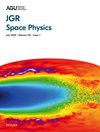This study investigated the latitudinal variations of post-sunset enhancements in the ionospheric electron density during the geomagnetic quiet period in May 2021 with a combination of high-precision ionospheric parameters obtained from four ionosondes, Beidou geostationary satellite (BD-GEO) receiver network and Sanya incoherent scatter radar (SYISR). We identified four categories of post-sunset enhancement phenomena (Types 1–4), each with unique spatial and temporal evolutions, yet uniformly accompanied by a decrease in hmF2. Measurements of plasma drift vector velocities from SYISR and hmF2 gradients across various latitudes provided pivotal insights, confirming that the ionospheric post-sunset enhancements can result from downward plasma motion due to westward electric field, downward field-aligned drift, or a combination of both. For Type 1, dominated by field-aligned drift, plasma density enhancements not only intensify at low latitudes but may also extend to mid-latitudes, exhibiting a distinct temporal delay with increasing latitude. In contrast, Type 4, primarily driven by the westward electric field, is characterized by modest increases in plasma density confined to localized low-latitude regions, with no observable latitudinal time delay in the peak of enhancements. Types 2 and 3, which are subject to the combined influence of the westward electric field and field-aligned drift, exhibit plasma density increases at certain low-latitude areas, with Type 2 presenting a delayed pattern and Type 3 showing none with rising latitude. Meanwhile, neutral winds can partially account for the observed post-sunset enhancement from low to middle latitudes. These findings offer new insights into the factors influencing ionospheric behavior after sunset.


